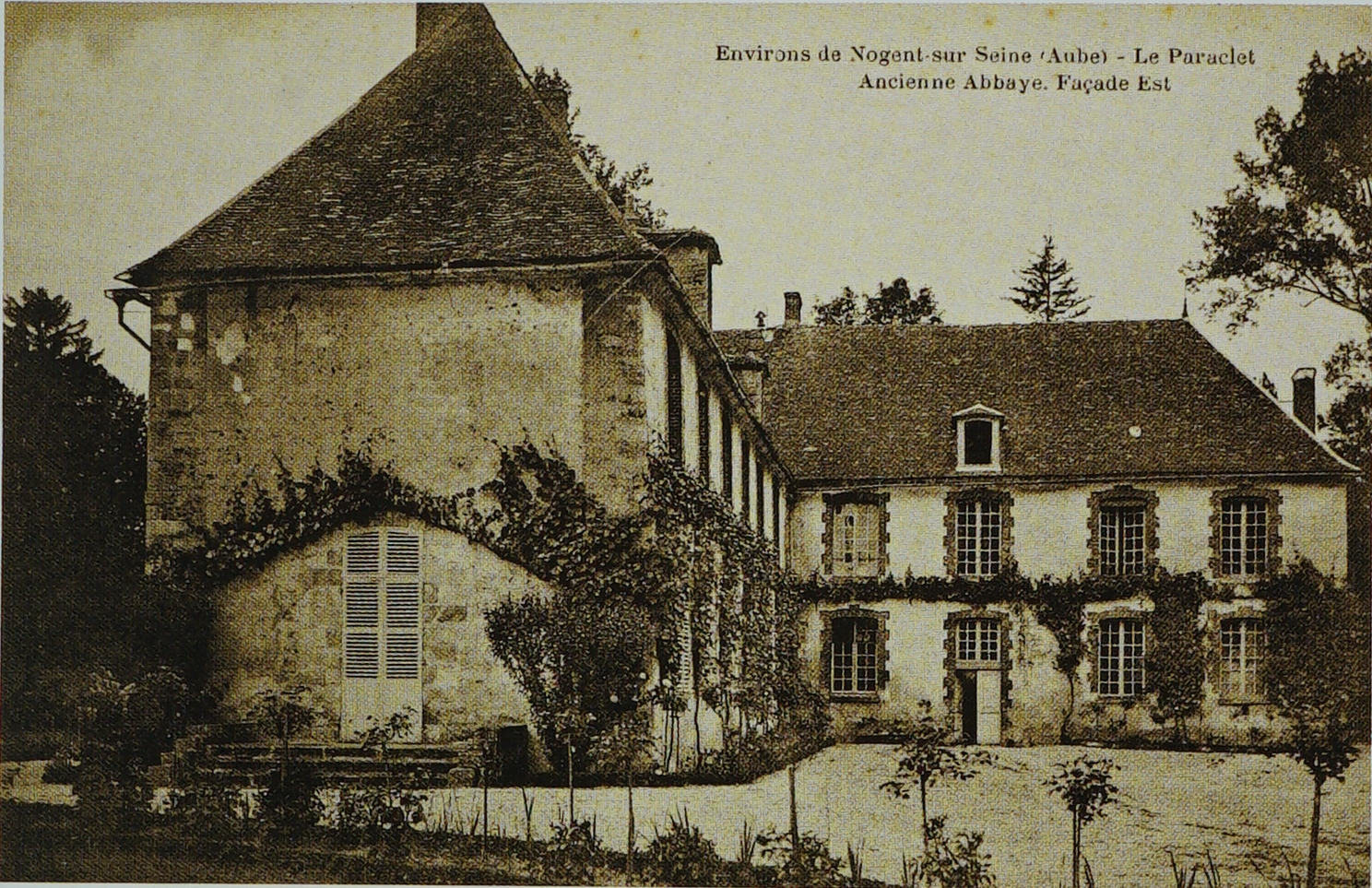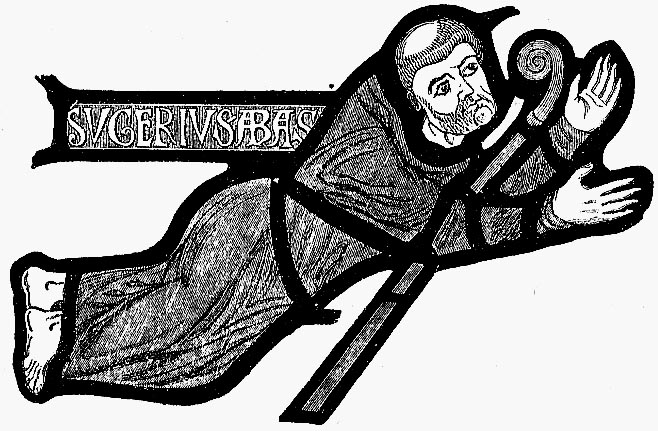|
Abbey Of The Paraclete
The Abbey of the Paraclete (french: Abbaye du Paraclet) was a Benedictine monastery founded by Peter Abelard in Ferreux-Quincey, France, after he left the Abbey of St. Denis about 1121. ''Paraclete'' comes from the Greek word meaning "one who consoles" and is found in the Gospel of John (16:7) as a name for the Holy Spirit. In 1125 Abelard was elected by the monks of the Abbey at Saint-Gildas-de-Rhuys, near Vannes, Brittany, to be their abbot. He turned the Paraclete over to the recently displaced Héloïse, his wife, who had been in a nunnery in Argenteuil before its disbandment by Abbot Suger. The Paraclete was rededicated as a nunnery. Heloise became the Paraclete's abbess and spent the rest of her life there. She and Abelard were buried together there (Abelard c. approximately 1142, Heloise c. approximately 1164) until 1792, when their remains were transferred to the church of Nogent-sur-Seine nearby. In 1817, their bodies were reportedly moved to a new tomb at Pere Lachais ... [...More Info...] [...Related Items...] OR: [Wikipedia] [Google] [Baidu] |
Abbot
Abbot is an ecclesiastical title given to the male head of a monastery in various Western religious traditions, including Christianity. The office may also be given as an honorary title to a clergyman who is not the head of a monastery. The female equivalent is abbess. Origins The title had its origin in the monasteries of Egypt and Syria, spread through the eastern Mediterranean, and soon became accepted generally in all languages as the designation of the head of a monastery. The word is derived from the Aramaic ' meaning "father" or ', meaning "my father" (it still has this meaning in contemporary Hebrew: אבא and Aramaic: ܐܒܐ) In the Septuagint, it was written as "abbas". At first it was employed as a respectful title for any monk, but it was soon restricted by canon law to certain priestly superiors. At times it was applied to various priests, e.g. at the court of the Frankish monarchy the ' ("of the palace"') and ' ("of the camp") were chaplains to the Merovingian and ... [...More Info...] [...Related Items...] OR: [Wikipedia] [Google] [Baidu] |
Religious Organizations Established In The 1120s
Religion is usually defined as a social-cultural system of designated behaviors and practices, morals, beliefs, worldviews, texts, sanctified places, prophecies, ethics, or organizations, that generally relates humanity to supernatural, transcendental, and spiritual elements; however, there is no scholarly consensus over what precisely constitutes a religion. Different religions may or may not contain various elements ranging from the divine, sacred things, faith,Tillich, P. (1957) ''Dynamics of faith''. Harper Perennial; (p. 1). a supernatural being or supernatural beings or "some sort of ultimacy and transcendence that will provide norms and power for the rest of life". Religious practices may include rituals, sermons, commemoration or veneration (of deities or saints), sacrifices, festivals, feasts, trances, initiations, funerary services, matrimonial services, meditation, prayer, music, art, dance, public service, or other aspects of human culture. Religions have sa ... [...More Info...] [...Related Items...] OR: [Wikipedia] [Google] [Baidu] |
Benedictine Monasteries In France
, image = Medalla San Benito.PNG , caption = Design on the obverse side of the Saint Benedict Medal , abbreviation = OSB , formation = , motto = (English: 'Pray and Work') , founder = Benedict of Nursia , founding_location = Subiaco Abbey , type = Catholic religious order , headquarters = Sant'Anselmo all'Aventino , num_members = 6,802 (3,419 priests) as of 2020 , leader_title = Abbot Primate , leader_name = Gregory Polan, OSB , main_organ = Benedictine Confederation , parent_organization = Catholic Church , website = The Benedictines, officially the Order of Saint Benedict ( la, Ordo Sancti Benedicti, abbreviated as OSB), are a monastic religious order of the Catholic Church following the Rule of Saint Benedict. They are also sometimes called the Black Monks, in reference to the colour of their religious habits. They were ... [...More Info...] [...Related Items...] OR: [Wikipedia] [Google] [Baidu] |
French Revolution
The French Revolution ( ) was a period of radical political and societal change in France that began with the Estates General of 1789 and ended with the formation of the French Consulate in November 1799. Many of its ideas are considered fundamental principles of liberal democracy, while phrases like ''liberté, égalité, fraternité'' reappeared in other revolts, such as the 1917 Russian Revolution, and inspired campaigns for the abolition of slavery and universal suffrage. The values and institutions it created dominate French politics to this day. Its causes are generally agreed to be a combination of social, political and economic factors, which the ''Ancien Régime'' proved unable to manage. In May 1789, widespread social distress led to the convocation of the Estates General, which was converted into a National Assembly in June. Continuing unrest culminated in the Storming of the Bastille on 14 July, which led to a series of radical measures by the Assembly, i ... [...More Info...] [...Related Items...] OR: [Wikipedia] [Google] [Baidu] |
Pere Lachaise Cemetery
{{disambiguation ...
Pere may refer to: *Pere, Hungary, a village in Borsod-Abaúj-Zemplén county * Rangimārie Te Turuki Arikirangi Rose Pere (1937–2020), Māori New Zealand educationalist and spiritual leader *Wi Pere (1837–1915), a Māori Member of Parliament in New Zealand See also * Péré (other) Péré may refer to: * Péré, Charente-Maritime, a commune in the Charente-Maritime department * Péré, Hautes-Pyrénées, a commune in the Hautes-Pyrénées department See also * Pere (other) Pere may refer to: *Pere, Hungary, a vi ... [...More Info...] [...Related Items...] OR: [Wikipedia] [Google] [Baidu] |
Nogent-sur-Seine
Nogent-sur-Seine () is a commune in the Aube department in north-central France. The headquarters of The Soufflet Group is located here, as is the Musée Camille Claudel. The large Nogent Nuclear Power Plant is located here. Population Personalities Sculptor Camille Claudel lived in Nogent-sur-Seine with her family from 1876 to 1879. Frédéric Moreau, the hero of Gustave Flaubert's novel ''Sentimental Education,'' is a native of Nogent-sur-Seine. The abbey of Nogent-sur-Seine was destroyed during the French Revolution. Fragments of it were used in 1817 in making the canopy over the graves of Pierre Abélard and Héloïse d'Argenteuil at the Père Lachaise Cemetery. International relations Nogent-sur-Seine is twinned with: * Rielasingen-Worblingen, Baden-Württemberg, Germany - since 1973 * Joal-Fadiouth, Senegal - 1987 See also * Communes of the Aube department * List of medieval bridges in France * Paul Dubois (sculptor) Paul Dubois (18 July 1829 – 23 May 1905 ... [...More Info...] [...Related Items...] OR: [Wikipedia] [Google] [Baidu] |
Betty Radice
Betty Radice (3 January 1912 – 19 February 1985) was a literary editor and translator. She became joint editor of Penguin Classics, and vice-president of the Classical Association. Her English translations of classical and medieval Latin texts were published in the mid-twentieth century. Biography Born Betty Dawson in Hessle, East Yorkshire on 13 January 1912, she was the daughter of William Dawson, a solicitor who was a scholar and musician and active in public life. William died in the 1918 flu pandemic, leaving her mother, Betty, sister Nancy and a brother in diminished circumstances. Both girls attended Newland School for Girls in Hull. She was granted a scholarship to St Hilda's College, Oxford, where she read Classics beginning in 1931. In 1935, she married Italo de Lisle Radice, whom she had met as an undergraduate. Together they relocated to London where Betty tutored in classics, Philosophy and English for Westminster Tutors and de Lisle began a civil service career. ... [...More Info...] [...Related Items...] OR: [Wikipedia] [Google] [Baidu] |
Historia Calamitatum
''Historia Calamitatum'' (known in English as ''The Story of My Misfortunes'' or ''The History of My Calamities''), also known as ''Abaelardi ad Amicum Suum Consolatoria,'' is an autobiographical work in Latin by Peter Abelard (1079–1142), a medieval French pioneer of scholastic philosophy. The work, written in 1132 or soon after, is one of the first autobiographical works in medieval Western Europe, written in the form of a letter (and, as such, is clearly influenced by Augustine's '' Confessions''). The letter is an extensive and honest self-analysis of Abelard up to the age of about fifty-four, and provides readers with knowledge of his views of women, learning, monastic life, Church and State combined, and the social milieu of the time. It should be particularly noted that the work was written at a time when Western Europe had only recently surfaced into the world of philosophy. Abelard emphasizes how persecuted he feels by his peers throughout the work. He quotes saints, ... [...More Info...] [...Related Items...] OR: [Wikipedia] [Google] [Baidu] |
Suger
Suger (; la, Sugerius; 1081 – 13 January 1151) was a French abbot, statesman, and historian. He once lived at the court of Pope Calixtus II in Maguelonne, France. He later became abbot of St-Denis, and became a close confidant to King Louis VII, even becoming his regent when the king left for the Second Crusade. Together with the king, he played a part in the centralization in the growing French Kingdom. He authored writings on abbey construction and was one of the earliest patrons of Gothic architecture and is seen as widely credited with popularizing the style. Life Suger's family origins are unknown. Several times in his writings he suggests that his was a humble background, though this may just be a topos or convention of autobiographical writing. In 1091, at the age of ten, Suger was given as an oblate to the abbey of St. Denis, where he began his education. He trained at the priory of Saint-Denis de l'Estrée, and there first met the future king Louis VI of Franc ... [...More Info...] [...Related Items...] OR: [Wikipedia] [Google] [Baidu] |
Argenteuil
Argenteuil () is a Communes of France, commune in the northwestern suburbs of Paris, France. It is located from the Kilometre Zero, center of Paris. Argenteuil is a Subprefectures in France, sub-prefecture of the Val-d'Oise Departments of France, department, the seat of the arrondissement of Argenteuil. Argenteuil is the second most populous commune in the suburbs of Paris (after Boulogne-Billancourt) and the most populous one in the Val-d'Oise department, although it is not its prefecture, which is shared between the communes of Cergy and Pontoise. Argenteuil shares borders with communes in 3 departements others than ''Val d'Oise'' : the Yvelines, Hauts-de-Seine and Seine-Saint-Denis departements. Name The name Argenteuil is recorded for the first time in a royal charter of 697 as ''Argentoialum'', from a Latin/Gaulish root ''argento'' meaning "silver", "silvery", "shiny", perhaps in reference to the gleaming surface of the river Seine, on the banks of which Argenteuil is locat ... [...More Info...] [...Related Items...] OR: [Wikipedia] [Google] [Baidu] |
Héloïse
Héloïse (; c. 1100–01? – 16 May 1163–64?), variously Héloïse d'ArgenteuilCharrier, Charlotte. Heloise Dans L'histoire Et Dans la Legende. Librairie Ancienne Honore Champion Quai Malaquais, VI, Paris, 1933 or Héloïse du Paraclet, was a French nun, philosopher, writer, scholar, and abbess. Héloïse was a renowned "woman of letters" and philosopher of love and friendship, as well as an eventual high-ranking abbess in the Catholic Church. She achieved approximately the level and political power of a bishop in 1147 when she was granted the rank of prelate nullius. She is famous in history and popular culture for her love affair and correspondence with the leading medieval logician and theologian Peter Abelard, who became her colleague, collaborator and husband. She is known for exerting critical intellectual influence upon his work and posing many challenging questions to him such as those in the ''Problemata Heloissae''. Her surviving letters are considered a founda ... [...More Info...] [...Related Items...] OR: [Wikipedia] [Google] [Baidu] |








